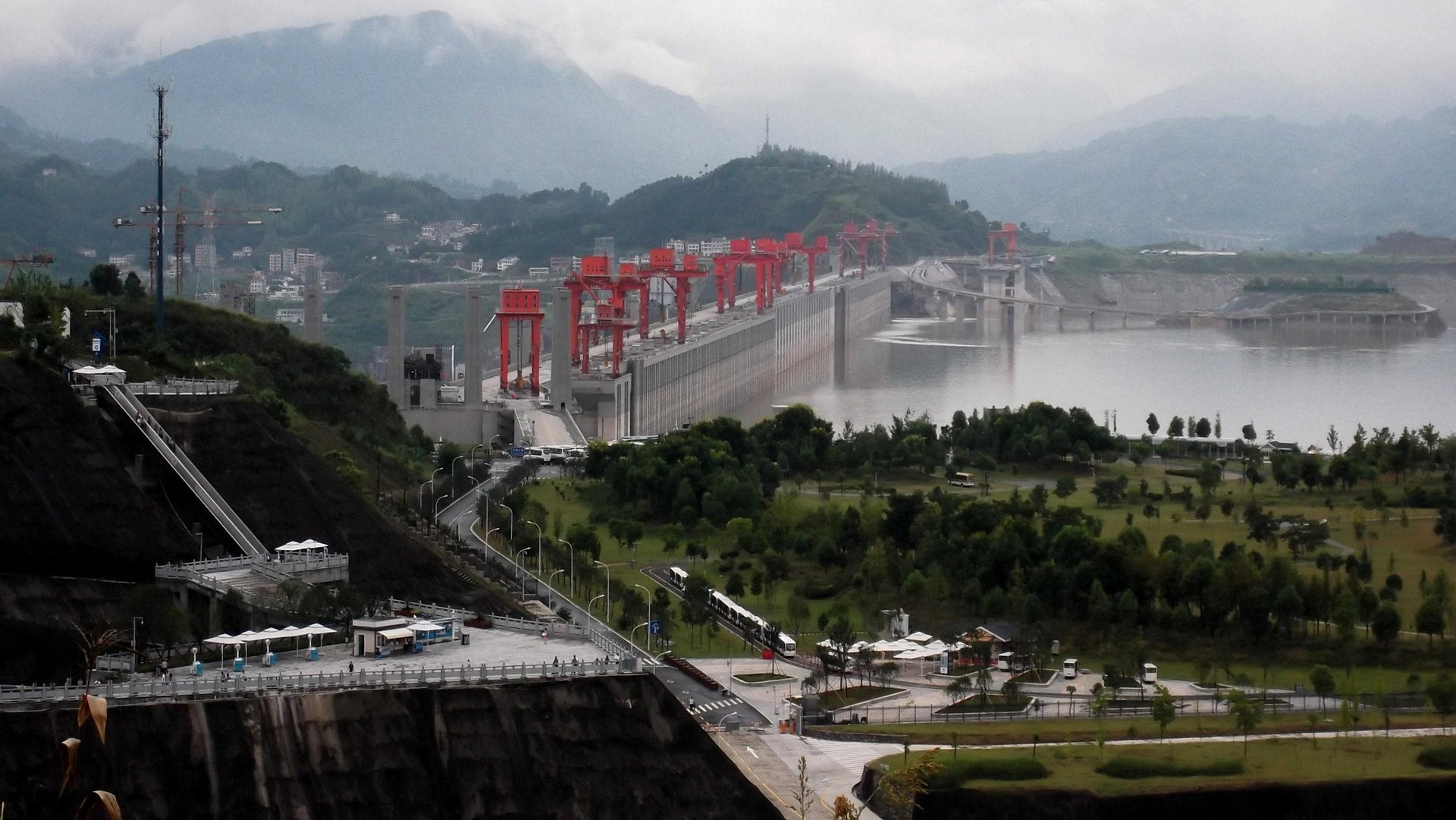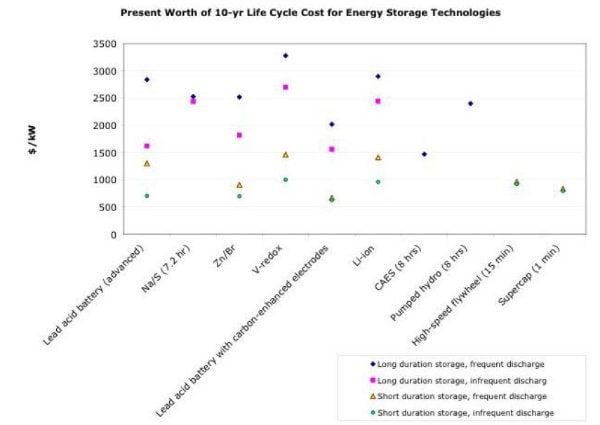Saving the sun’s shine: Storage technology could revolutionize the power grid
Transitioning electricity generation away from fossil fuels and toward clean renewable power is an essential part of curbing carbon emissions. Renewables are also a way to achieve true, permanent energy independence. But getting the grid to accommodate more renewables has been challenging, in part because wind and solar are intermittent sources of power—the wind doesn’t always blow and the sun doesn’t always shine. This has put them at a disadvantage to always-on power sources like nuclear and coal plants.


Transitioning electricity generation away from fossil fuels and toward clean renewable power is an essential part of curbing carbon emissions. Renewables are also a way to achieve true, permanent energy independence. But getting the grid to accommodate more renewables has been challenging, in part because wind and solar are intermittent sources of power—the wind doesn’t always blow and the sun doesn’t always shine. This has put them at a disadvantage to always-on power sources like nuclear and coal plants.
Better storage technologies could banish that problem, making renewables as constant as their conventional competitors. When wind and solar are generating more power than can be used immediately, that electricity can be stored for later use. Those technologies are now advancing at a rapid pace.

A few promising storage solutions include:
Pumped hydro. Pumping water up a hill and then capturing its energy with a turbine as it flows back down is one of the oldest forms of energy storage. It’s efficient—as much as 85% round-trip—and also generally the cheapest large-scale technology, at around $2,500 per kilowatt.Modern applications are usually utility-scale installations like hydroelectric dams. At an even larger scale, Norway is aiming to provide electrical power storage facility for all of Europe, using its abundant water resources and optimal geography to store power generated from wind and solar installations across the continent. Fully exploiting Norway’s potential will require more transmission capacity, however.
Batteries. All off-grid solar installations, and some grid-connected ones, use battery banks to provide power when the sun isn’t shining or the grid is down. Batteries for this application typically include “flooded” batteries that contain an electrolyte liquid (like the lead-acid battery that starts your car); ones that contain a gel; and “absorbed glass mat” batteries that use a saturated fiberglass mat. Batteries are highly efficient, typically delivering 80%-90% round-trip efficiency.
Batteries are highly scalable, from household-sized banks to the “world’s largest battery,” a massive 13,760-cell, 40-megawatt NiCad installation that can power the grid in Fairbanks, Alaska for 15 minutes while backup generators start up in the event of an outage.There are many other types of batteries, including the lithium batteries typically used in electric and hybrid cars. Some of them are still in the experimental stage, while others are being used in various industrial applications. They typically offer better capacity and recharge/discharge rates, but are also usually much more expensive than their more conventional counterparts.
While it hasn’t yet been tested at scale, another approach called vehicle-to-grid could use the batteries in hybrid and electric cars as backup. With a sufficient number of such vehicles plugged into the grid overnight, this approach could be a cost-effective and reasonably scalable way to store excess wind power. However, batteries are a relatively expensive form of storage: $1,400 to $4,900 per kilowatt at commercial scale, depending on the power, capacity, and type of battery.
Compressed air energy storage (CAES). This is a mechanical, not electrochemical, approach which uses an electricity-powered air compressor to drive air into storage tanks, then releases it as needed to run a generator. CAES can be a cheap form of storage, second only to pumped hydro at $1,000 to $1,500 per kilowatt. The main problem with it has been its low efficiency, which is typically around 10%-20%.Numerous designs for this storage technology have been offered to the market in recent years, from small commercial to utility scale. Most recently, a company called LightSail received a $37.5 million investment from tech titans Peter Thiel, Vinold Khosla and Bill Gates for its design. LightSail aims to achieve a round-trip efficiency of over 90%, primarily by preventing heat losses common to older designs, and deliver storage for under $1,500 per kilowatt at a small scale (around 100 kilowatts initially).With continued development, CAES could be a useful storage technology at all scales, from residential to utility. I think it’s promising, because it’s relatively low-tech, robust, and can be hardened against the elements fairly easily.
Thermal storage. This suite of technologies includes freezing water overnight when power is cheap, then blowing air over it during the day to cool buildings (reducing the need for expensive peak power generation); pumping heat into large containers of gravel or engineered concrete and then recovering it to run conventional turbines; and using molten salts, metals, and other high-temperature media to store heat from concentrating solar power (CSP) installations, enabling them to generate power 24/7.
Flywheels. Probably the oldest form of kinetic energy storage known to man—used since antiquity in spinning wheels, mills, knife grinders, and so on—flywheels are now being used to store electrical power, in vacuum-sealed units with discs rotating at very high speeds. They’re primarily used for applications like grid frequency modulation and short, high-capacity bursts of backup power for telephone switching stations, but with further development they might become useful for residential and commercial applications as well.
Beyond storage, better grid connectivity can also help solve the intermittency problem by permitting excess power to be shipped from one region to another—say, from North Dakota to New England on a windy night. Like pumped hydro in Norway, this approach will require more and higher-capacity transmission lines such as a high-voltage DC backbone. More networked transmission lines will permit the grid to accommodate much more renewable power generation than it can currently, while making the grid more stable and more resilient to regional power outages.
Better grid planning, along with smart grid information technologies that persuade consumers to shift their power consumption to times when prices are low, can also reduce the need for generation and storage.
While some of these technologies are still in the early stages of development and deployment, they are advancing rapidly. Academic research into storage is absolutely exploding worldwide, and venture capital is pouring into the sector. According to an analyst at Boston-based Lux Research, energy storage services could be a $31.5 billion market globally by 2017. By the end of this decade we should see numerous new storage technologies becoming ready for prime time, enabling previously-unthinkable penetration rates of renewable power at commercially viable prices. It’s absolutely possible that our grid could be fully powered by renewables one day, and countries like Australia and Denmark are aiming to do just that.